As various people have pointed out over the years, “Everything old is new again.” That’s easy to see in realms like music, art, and fashion, but it’s equally true in the culinary world — but in that case “old” can sometimes mean really, really old.
A number of food products and dishes that we consume today — some of which are even currently trendy — trace their origins back not just hundreds but many thousands of years.
Basics on our tables like bread, wine, beer, olive oil, cheese, and butter were first enjoyed in prehistoric or ancient times, and though they may have evolved over the centuries, they would usually be recognizable as exactly the same things we enjoy when we sit down eat.
To assemble a list of some ancient foods we still eat today, 24/7 Tempo consulted a number of food and history websites, including Food Timeline, Gastro Obscura, and History, as well as specific sites dedicated to cheese-making, Mesopotamian cooking, and indigenous Latin American foodways. The list is far from complete, omitting, among other things, such items as “milk” or “roast meat,” whose origins are both obvious and so basic that their first appearances are impossible to date. (If roast meat is your thing, however, you might want to save up and visit one of America’s most expensive steakhouses.)
It should be noted that much of what we know about what our faraway ancestors ate comes from the results of archeological investigation — results sometimes contradicted or updated as new evidence is discovered. There are also instances where more than one region can credibly claim the development or invention of a dish or foodstuff. And it is also impossible to give exact dates for the first appearance of such things; the closest we can come when we can point to an early written reference, which allows us to say, at least, that this food was known by this time.
Note, too, that in giving the probable origins of the foods on this list, we have used to the modern names of countries that did not exist as nations during the time period covered, to provide geographical context that will be meaningful to the modern reader.
Here is a list of ancient foods we still eat today:
Flatbread

- Probable origin: The Black Desert (Jordan)
- When invented (approximate): 12,400 B.C.
Long before our prehistoric ancestors figured out how to cultivate wheat, they were making bread from wild wheat and barley and starchy roots. The earliest examples were unleavened, or leavened only opportunistically by wild yeasts, and were cooked not in an oven but on hot stones. An archeological site in present-day Jordan has turned traces of such bread made by a Neolithic people called the Natufians. The descendants of their early efforts are on menus all over America today.
Butter
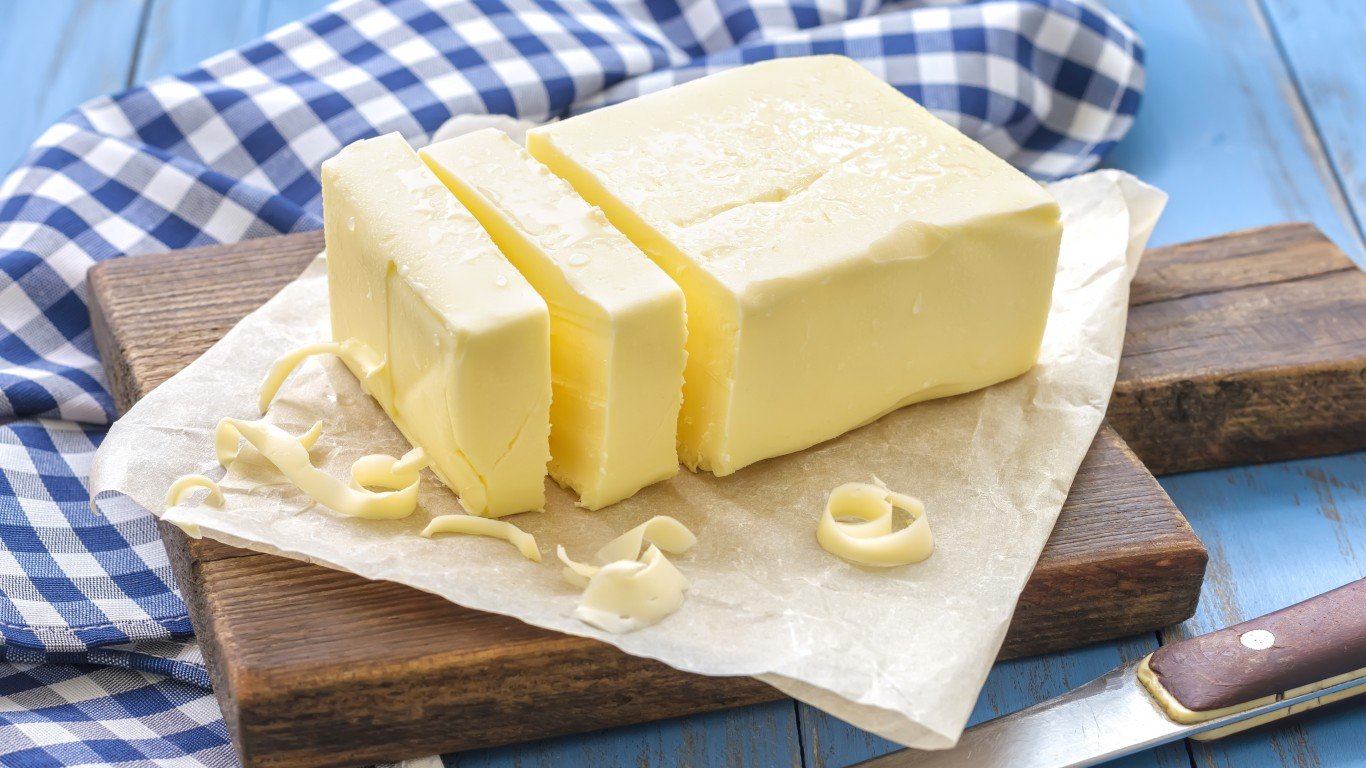
- Probable origin: Africa
- When invented (approximate): 8000 B.C.
Butter, without which bread would be very lonely and French cuisine would not exist, is made by churning milk until its solids coagulate. Historians believe that it was invented accidentally more than 10,000 years ago, when nomads somewhere in Africa transported milk by pack animal in animal-skin bags. The action of the animal’s movement would have had a churning effect — and once they got over their disappointment at not having much to drink (just the leftover buttermilk), they probably figured out that those coagulated solids were good to eat. The milk involved probably came from sheep or goats, as dairy cows didn’t come on the scene until a few thousand years later.
Tamales
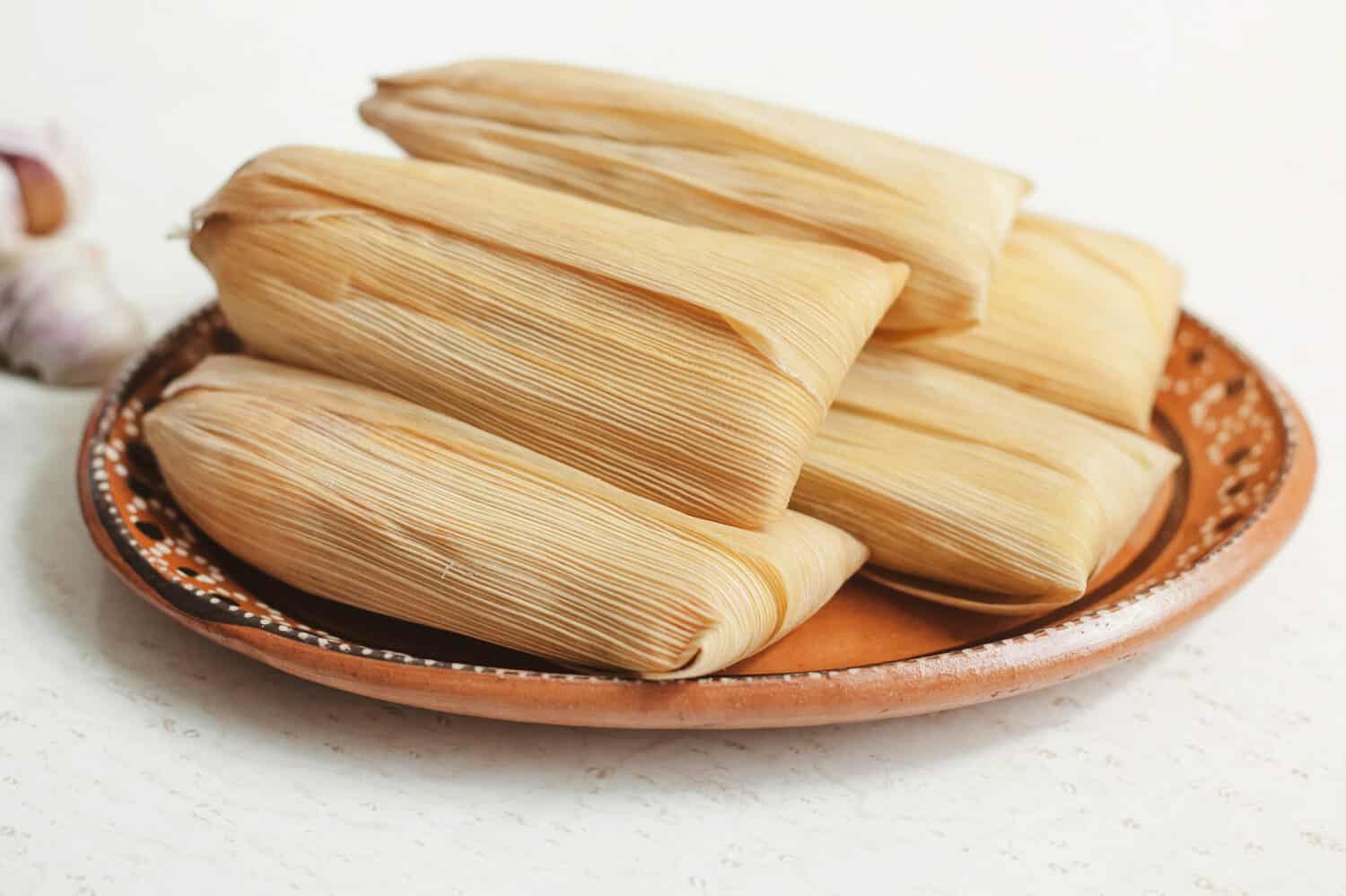
- Probable origin: Central America
- When invented (approximate): 8000-5000 B.C.
This elemental specialty of Mexican and Central American cuisine, which is a dough of nixtamalized (alkali-treated) corn with various fillings, wrapped in a corn husk or banana leaf and steamed, dates from the Mesoamerican era. Aztecs, Maya, and other indigenous peoples all made their own versions. Tamales were handy food for traveling, and also became associated with special occasions, like weddings and festivals, and today are considered an essential food for the Christmas season.
Wine

- Probable origin: Georgia
- When invented (approximate): 6000 B.C.
Wine was probably invented accidentally. If fruit is left to over-ripen and crack, releasing its juices, wild yeasts might find the liquid and begin their magical transformation of sugar into alcohol and carbon dioxide. It likely wouldn’t have taken long for people to figure out how to bring some measure of control to the process. The earliest vestiges of wine production have been found in what is now the Central Asian republic of Georgia. Slightly later, Persia and Armenia began making wine, too, and the next thing you know there was a bottle of Pinot Grigio or Merlot on every table in America.
Popcorn

- Probable origin: Peru
- When invented (approximate): 4700 B.C.
Corn (or maize) was first cultivated around 8000-7000 B.C., in Mexico. It quickly spread southwards, into Central and South America, developing considerable diversity along the way. Today there are more than 50 varieties grown in various places, and certain types will “pop,” or open and puff up, when heated. Fossil remains suggest that this effect was first discovered in Peru, a country known for the immense diversity of its corn crops.
Beer

- Probable origin: Iraq
- When invented (approximate): 4500-4100 B.C.
Like many other human inventions, beer seems to have been developed independently in several places simultaneously — in this case, in Europe, the Middle East, and China. The earliest recipe for beer is found in a Sumerian poem from around 2000 B.C., but archeologists have found indications of beer brewed from barley (like most modern beer) more than 2,000 years earlier, in what is now Iraq. Evidence from Northern Europe and China suggest similar brews were made around the same time. Some historians have proposed that the need to cultivate barley for beer-making was instrumental in converting nomads into settled farmers, thus providing the basis for civilization as we know it.
Pancakes

- Probable origin: Greece
- When invented (approximate): 4500 B.C.
Pancakes are a cousin to flatbread, but made with a densely liquid batter instead of a firmer dough. While they may also have appeared elsewhere, we know that the Greeks ate them in the fifth millenium B.C., because they’re mentioned in poetry of that period. They later became popular with the Romans, as well — and when a well-preserved mummy from the late fourth century B.C. known as Ötzi the Iceman was discovered in 1991 frozen in the mountains between Austria and Italy, remnants of what appeared to be pancakes were found in his stomach.
Olive oil
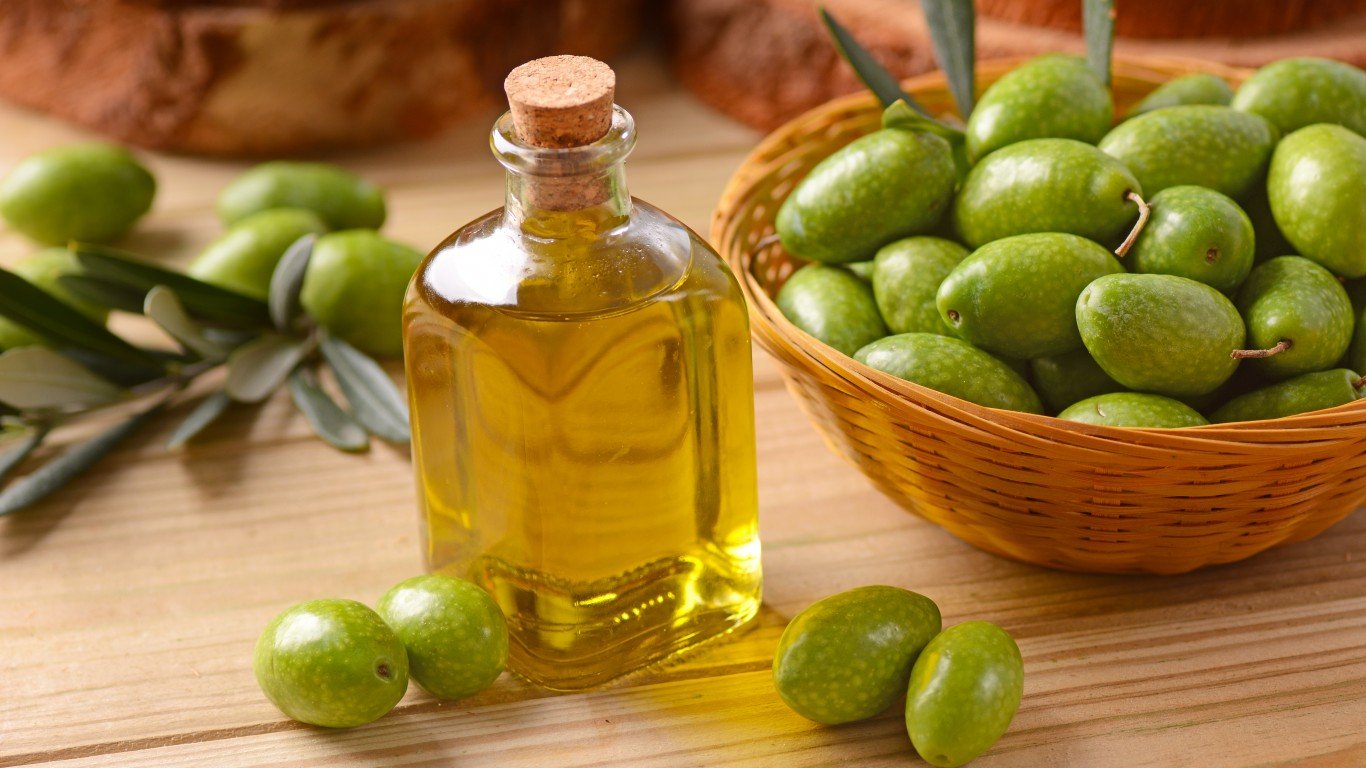
- Probable origin: Eastern Mediterranean
- When invented (approximate): 3000 B.C.
Olive trees were growing wild around the Eastern Mediterranean as much as 40 million years ago, and about 100,000 years ago, humans discovered that their fruit was good to eat and could be pressed into oil. The oil wasn’t eaten, though — it was burned for light and fuel, and used for skin care. Olive trees were first cultivated around 5000 B.C., and somewhere around 3000 B.C., people figured out that it tasted pretty good and could be used for cooking and both seasoning and preserving food.
Curry
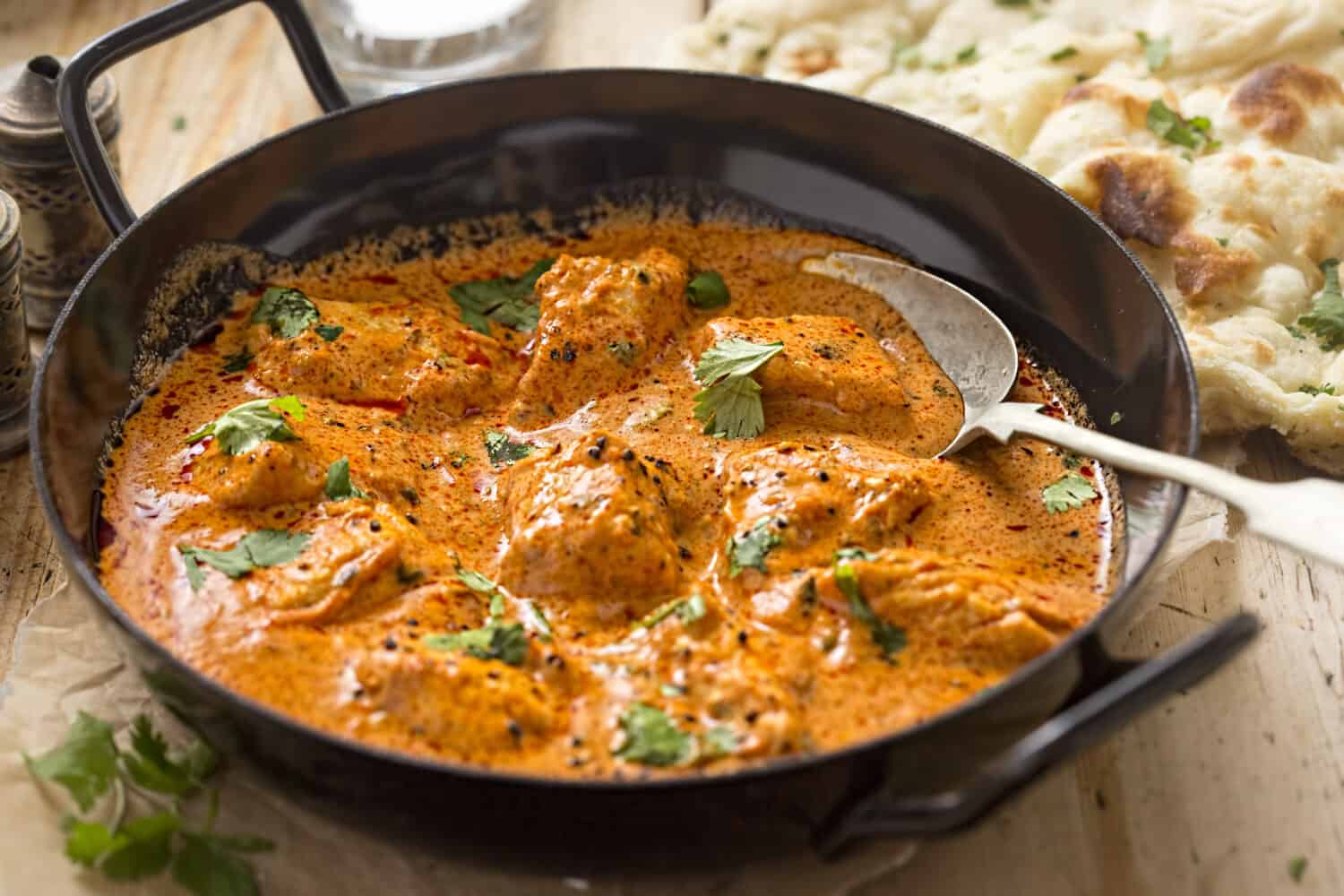
- Probable origin: Indus Valley (portions of India, Pakistan, and Afghanistan)
- When invented (approximate): 2600 B.C.
The word “curry” comes from a Tamil word meaning a sauce made from the aromatic leaves of the curry tree, a tropical and sub-tropical variety distantly related to citrus. The term wasn’t applied to a spice mixture or a dish made with it until the 17th century — but archeologists have found the remains of a powder made from ground fennel and mustard seeds, cumin and tamarind pods, which would yield a curry-like flavor, in the Indus Valley from the early 26th century B.C. Other digs revealed the use of ginger, turmeric, and garlic in cooking. Chiles, however, weren’t part of the mix until the 1500s, which they first arrived from the New World.
Noodles
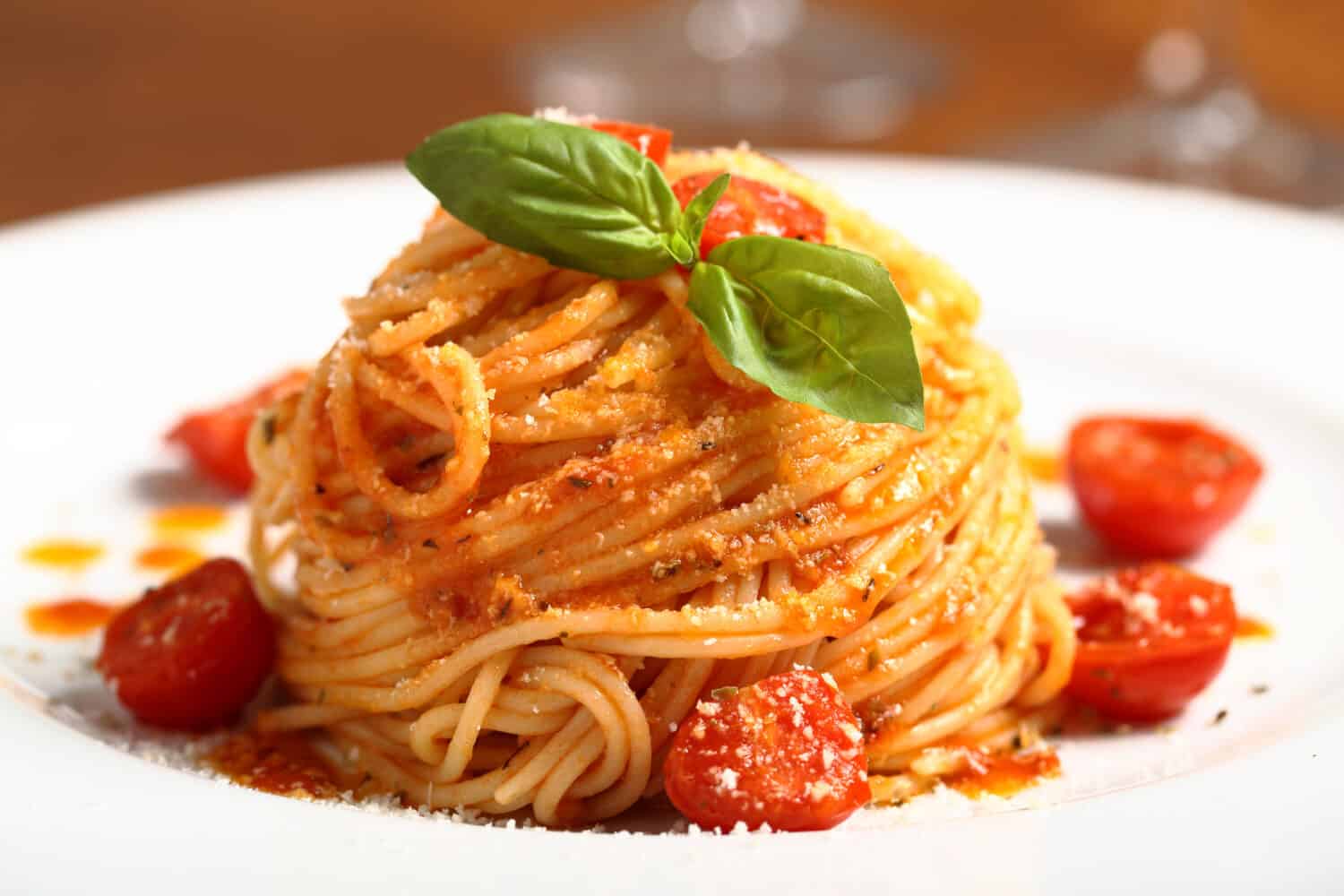
- Probable origin: China
- When invented (approximate): 2000 B.C.
No, Marco Polo didn’t discover noodles in China and bring them back to Italy, where they became pasta. That said, the earliest written reference to long, thin strips of dough cooked and seasoned with a sauce does date from China more than 4,000 years ago — and archeologists have found a bowl containing the remnants of noodles from about the same time in northeastern China. Pasta appeared independently a couple of thousand years later in Greece, and traveled from there through the Middle East to Italy and beyond.
Lamb stew
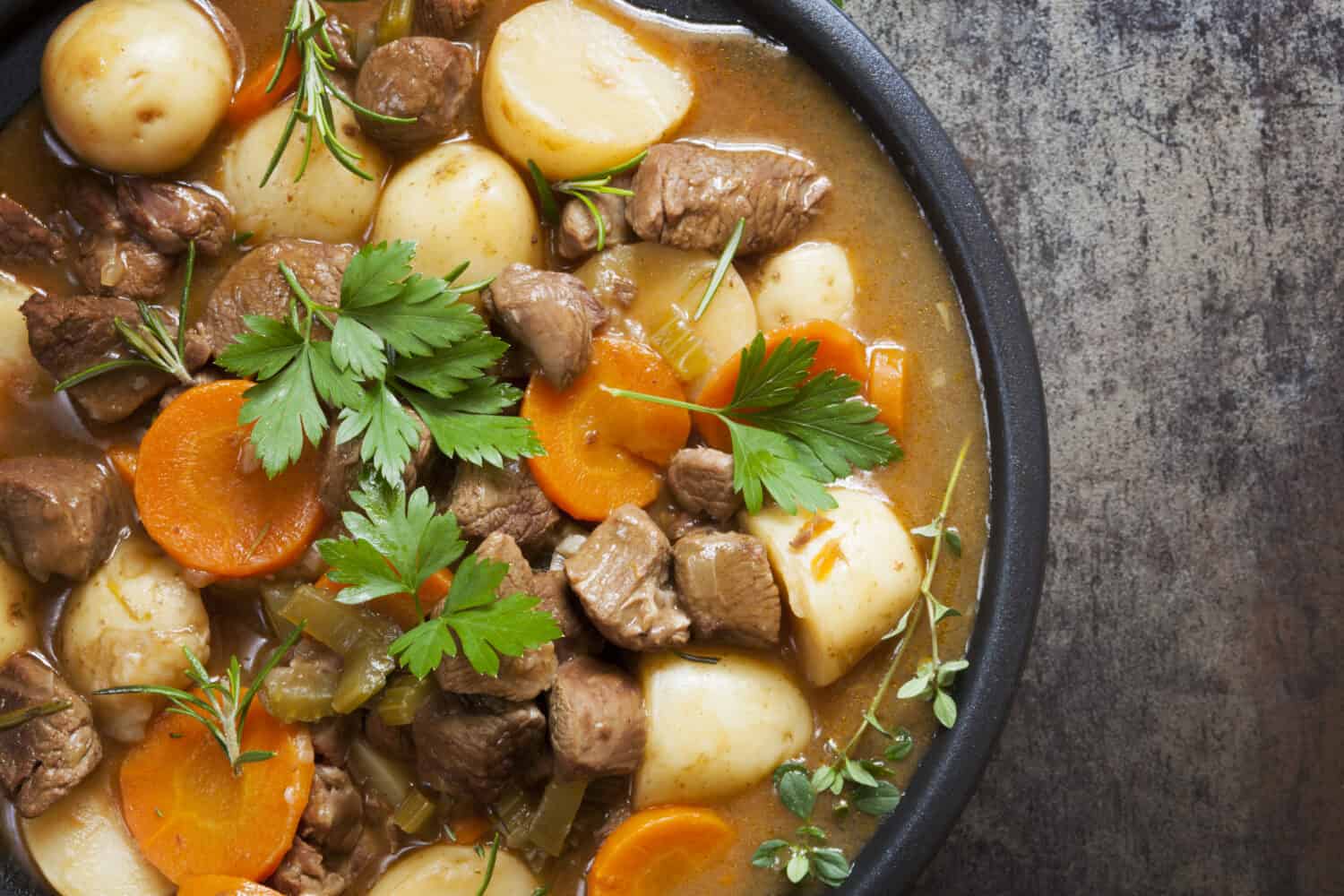
- Probable origin: Babylonia (Iraq and portions of Syria and Iran)
- When invented (approximate): 1750 B.C.
Stew in general is an ancient food, a way of cooking meat and vegetables for a long period over low heat known in many corners of the world. The oldest written recipe, however, dates from one of three ancient tablets in the Akkadian language, which now reside in the Yale Babylonian Collection. It is the formula for a stew made with lamb and lamb fat — the recipes stresses that “no other meat is used” — and flavored with garlic and onions and possibly licorice (the translation is uncertain). While the recipe can be reproduced today, other lamb stews, such as France’s navarin d’agneau and Ireland’s Irish stew, are probably more to contemporary tastes.
Baklava

- Probable origin: Assyria (portions of modern-day Iraq, Kuwait, Syria, and Turkey
- When invented (approximate): 800 B.C.
This rich pastry consisting of layers of filo dough, ground or crushed walnuts or pistachios, and honey, was originally made in parts of the Assyrian Empire with thin layers of flatbread instead of filo. Something very much like modern-day baklava wasn’t first recorded until around 1500, in the Ottoman Empire.
Chutney
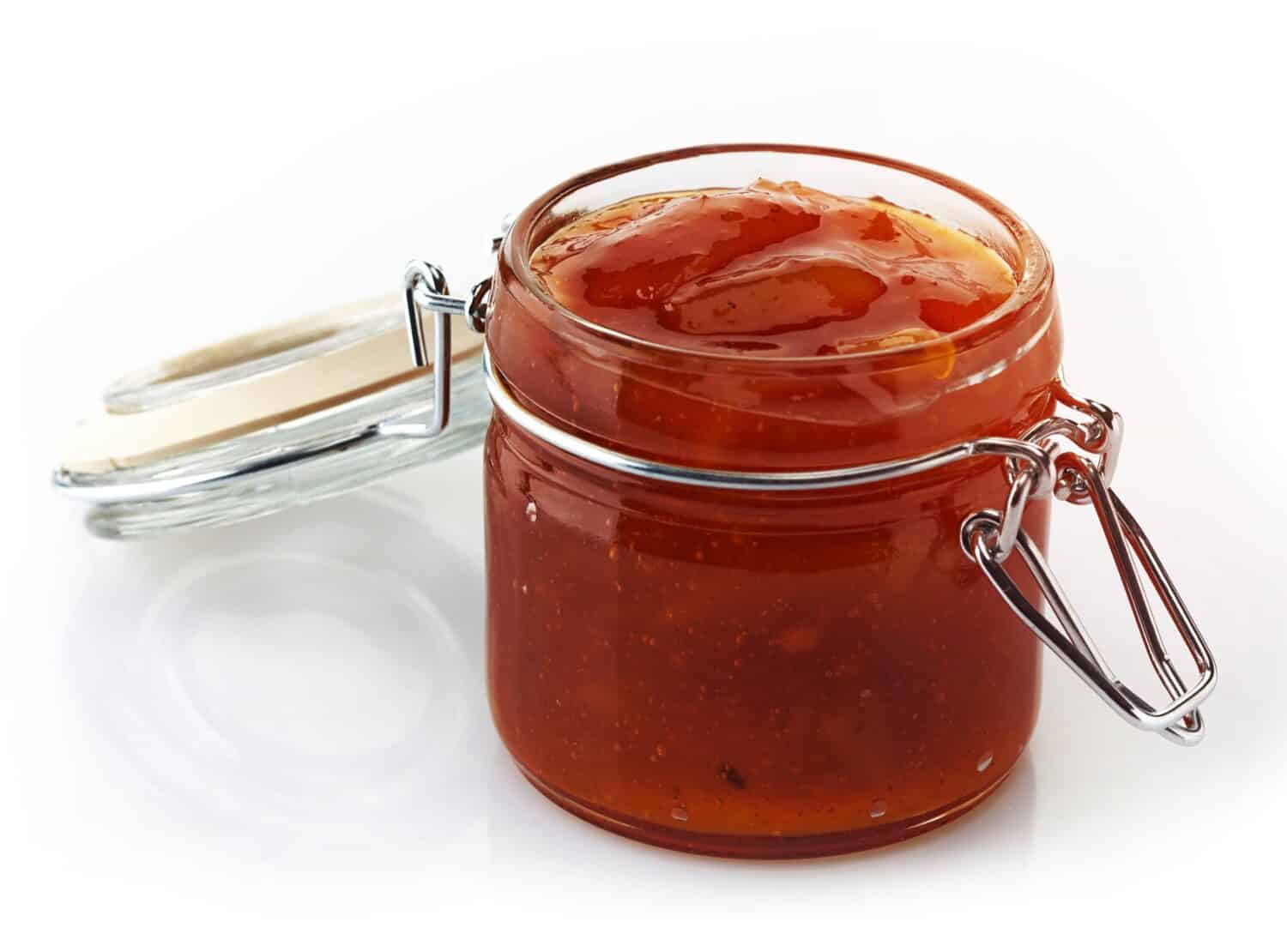
- Probable origin: India
- When invented (approximate): 500 B.C.
The term “chutney” is applied to a number of different condiments typically served with Indian cuisine. Some are sweet, involving mango (maybe the most common today), coconut, guava, and other fruits, while some are based primarily on various vegetables, peanuts, or sour limes. They are closely related to pickled fruits and vegetables. The first examples appeared in India, and they were later adopted by the Romans and eventually the British. As with curry, chutneys weren’t spicy — or were spiced only with peppercorns — until after the arrival in India of chiles from the Americas.
Ham
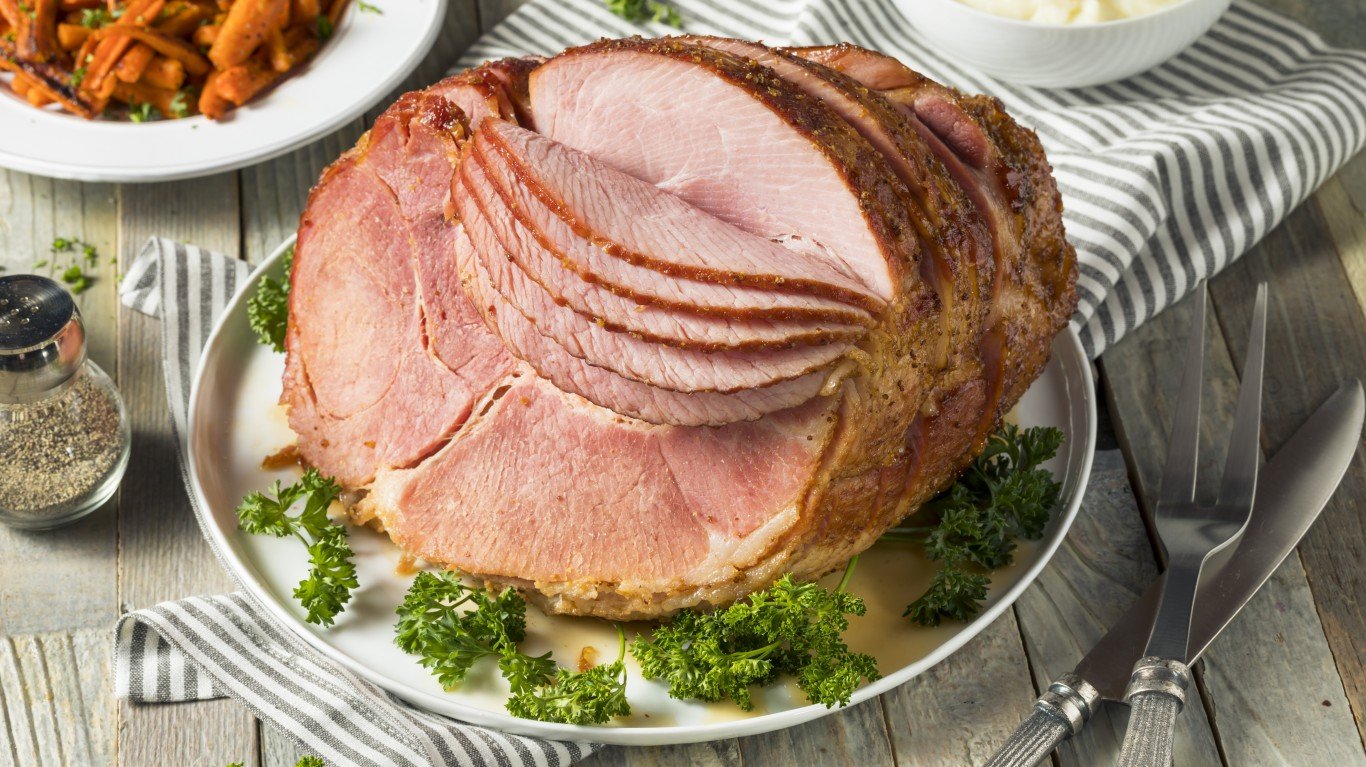
- Probable origin: Etruria (Italy)
- When invented (approximate): 500-400 B.C.
The earliest written records of pork legs being cured and sometimes smoked come from Central Italy, where they were a feature of Etruscan cookery. The Romans took up the craft of ham-making, and spread it throughout Europe. There are competing claims around its origins, though: The definitive French culinary manual Larousse Gastronomique avers that the first hams were made in Ancient Gaul, while others maintain that ham was first produced in China.
Bone broth
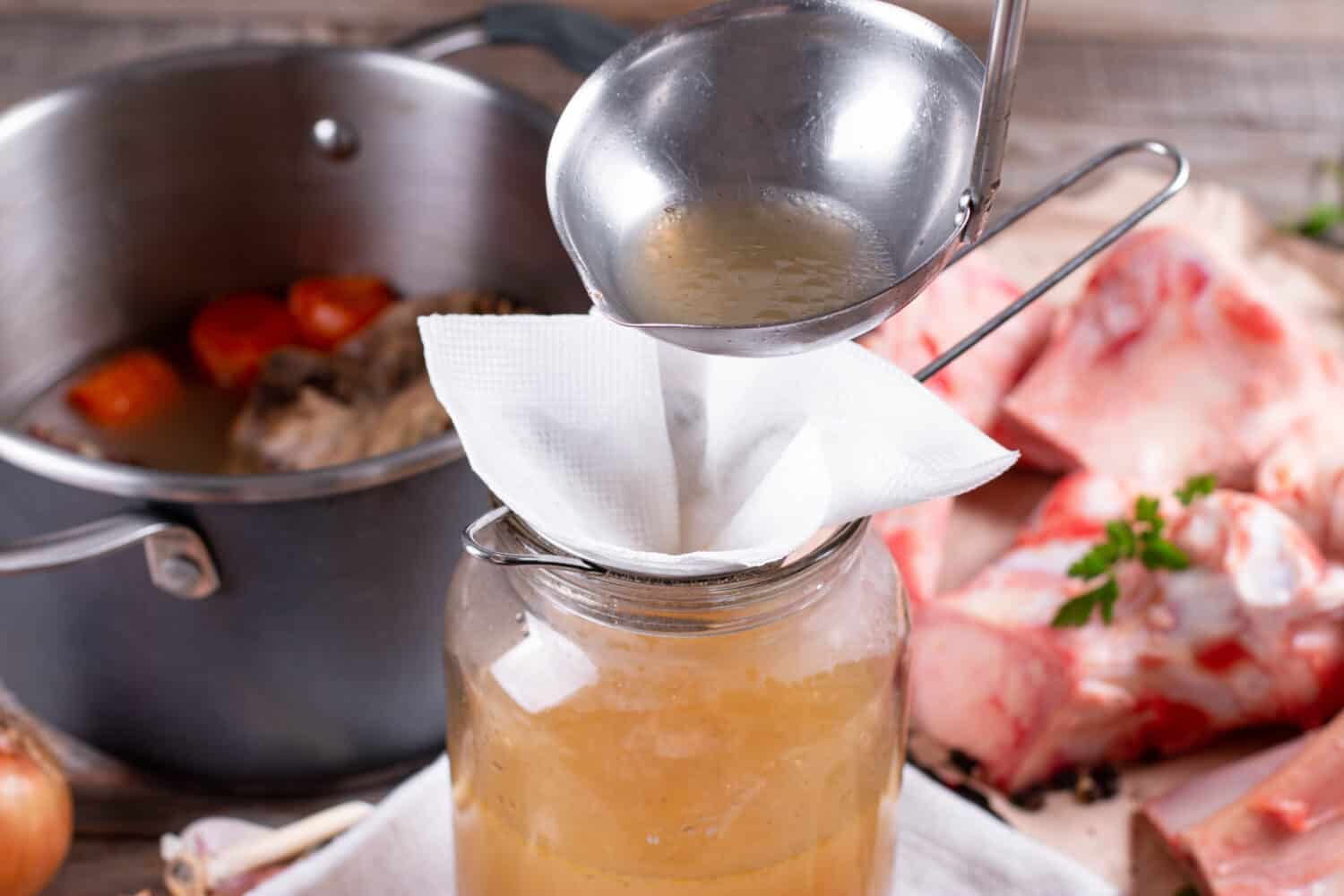
- Probable origin: China
- When invented (approximate): 400 B.C.
We may think of bone broth as a modern food fad, but the Chinese were simmering meat on the bone with spices and other flavorings more than two centuries ago. Whether ancient or modern, bone broth is basically particularly rich stock, full of collagen (the protein that yields gelatin). Because it’s also high in protein and is typically flavored these days with turmeric and other “medicinal” spices, many health claims have been made for bone broth, but scientific evidence of its salutary effects is minimal.
Kombucha

- Probable origin: China
- When invented (approximate): 220 B.C.
Kombucha is fermented tea, sometimes with fruit juices or other flavorings added. It has a faint pinprick carbonation, and trace amounts of alcohol — usually less than 0.5%. Food historians trace its origins to the region of the Bohai Sea in eastern China. From there, neighboring Russians took it up, and introduced it to the rest of Europe. It grew particularly popular in this country in the early 21st century.
Tofu
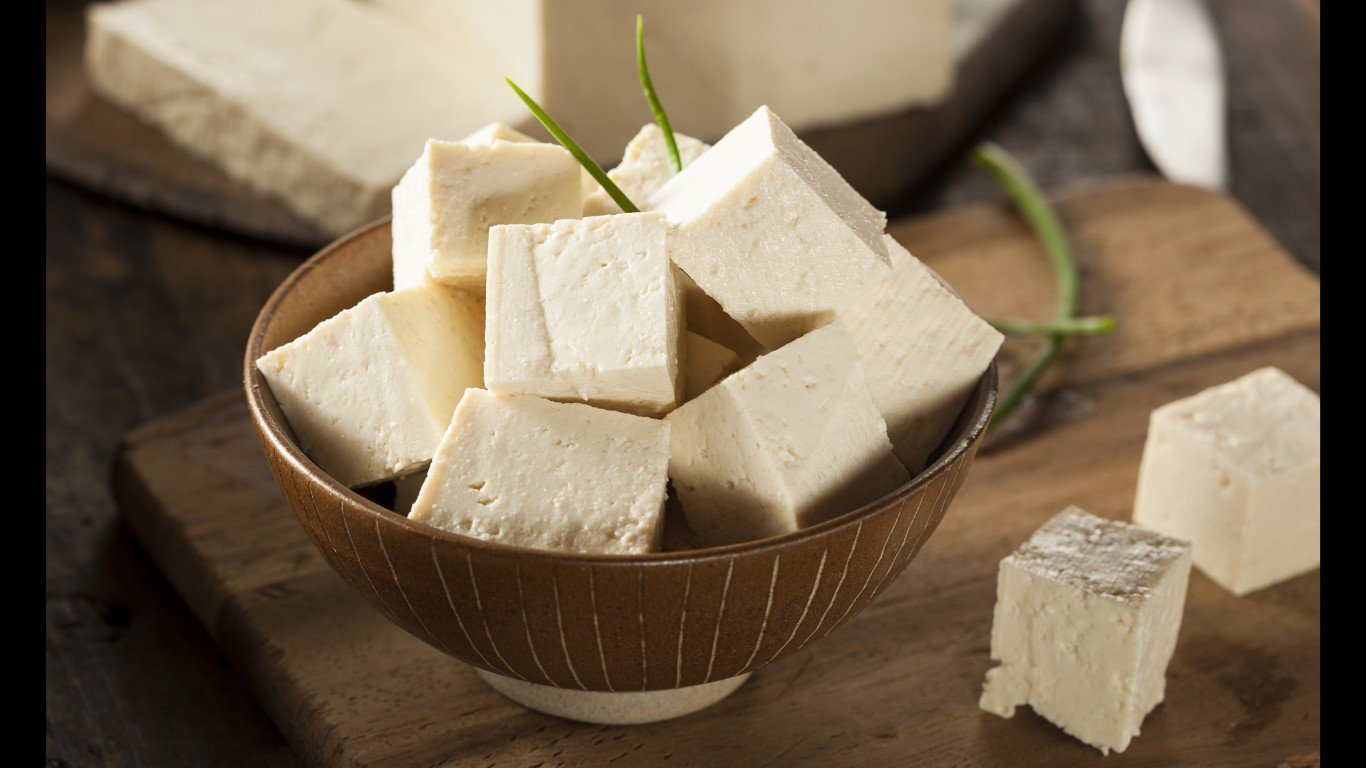
- Probable origin: China
- When invented (approximate): 179-122 B.C.
Tofu — soybean curd, made from coagulated soy milk — first appeared a little more than 2,000 years ago, during China’s Han Dynasty. It was adopted by the Japanese, and then by cooks in various parts of Southeast Asia. It became an important source of protein for those keeping to a vegetarian or vegan diet, and is also seen as an Asian equivalent to cheese — which makes it popular in a region where lactose intolerance is extremely common.
Feta cheese

- Probable origin: Greece or Bulgaria
- When invented (approximate): 160 B.C.
Cheese made from sheep’s or goat’s milk or a combination of the two goes back at least to the Bronze Age, but brining it — a definitive characteristic of the popular, crumbly cheese called feta — is far more recent. Though it was probably being done some centuries earlier (perhaps as a means of preserving the cheese in transport for trade), the first written reference to brined cheese is found in “De agri cultura” or “On Farming,” written by the Roman politician and historian Cato the Elder in the mid-second B.C. Some sources, however, believe that the original feta was the Bulgarian brined sheep’s milk cheese called sirene. Bulgaria used to market this variety as feta, but following a decision by the EU in 2002, it can no longer use the term. (Here is a list of the biggest food fads from the decade you were born.)
